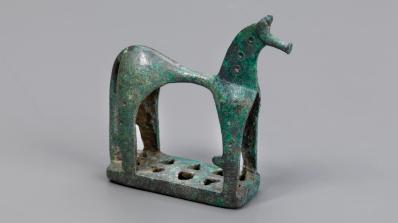The Beauty of Bronze
Location
Temporary Exhibitions, Kim Gallery
About
Bronze—a combination of copper, tin, and small amounts of other metals—has long been prized for its preciousness, endurance, and ability to register fine details and reflect light. It is strong and durable, making it ideal for modeling expressive gestures, yet—in molten form—it is malleable enough to be suitable for creating intricate shapes. The term “bronze” is often used for other metals as well, including brass, which is an alloy of copper and zinc.
There are two basic methods of casting a bronze in order to make multiple versions of the same design. Sand casting—developed in the early nineteenth century in Europe—is a relatively simple and less expensive technique that relies upon disparate molds made of compacted fine-grained sand that allow for easy production and assembly. Traditional lost-wax casting uses wax models in two manners, or methods, both of which date from antiquity. In the “direct” method, the original wax model itself is used (and thereby destroyed); in the “indirect” method, reusable plaster molds are taken from the original wax model.
The medium’s intrinsic tensile strength and ability to render precise features and various surfaces have been applied to a variety of objects, including vessels, implements, portraits, animals, and figurines. The examples on display here document the worldwide attraction to this remarkable material from antiquity to the early twentieth century.
Most museum installations present works of art that reflect the achievements of a particular culture, a defined period of time, or a specific theme. In this case, an array of disparate objects produced in a single medium has been selected to highlight a range of utilitarian forms and artistic designs produced either as multiple casts or as unique pieces. These sculptures showcase the universal allure of bronze for daily use, for devotional purposes, or for purely aesthetic appeal.
Exhibition Curator
T. Barton Thurber
